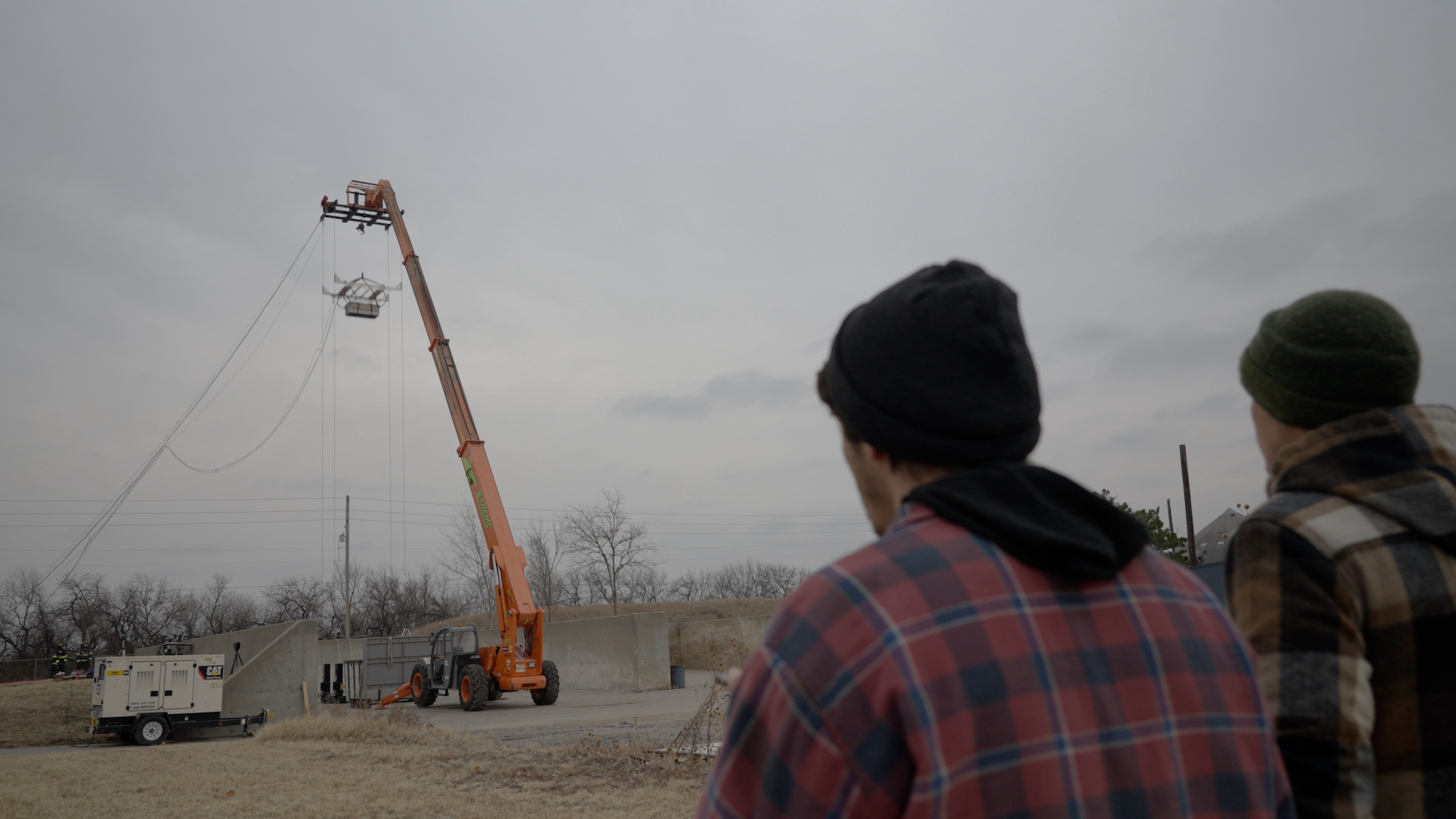

In Kansas earlier this month, a large pack of aviation batteries plunged 50 feet from an orange-colored tower and smacked down below with a thud. The result of this test involving battery cells and gravity? The unit was ok! There was “no significant damage at the cell or pack level,” according to Beta Technologies, which supplied the pack and has created an electric aircraft that The New York Times has referred to as “the battery that flies.”
Like jet fuel, lithium-ion batteries can be flammable, thanks to the liquid electrolyte within them as well as the fact that they store oodles of energy and can experience a fire-starting reaction called thermal runaway. And fire on an aircraft can be disastrous.
This test, examining how a battery system holds up following a hard impact, took place at a facility called the National Institute for Aviation Research (NIAR) in Wichita, Kansas. The FAA sponsored it.
“This is the first time ever that anyone has run one of these 50-foot drop tests with a battery pack,” Gerardo Olivares, a senior research scientist at NIAR, said in the video of the test. “It’s going to help us define some of the future regulations and requirements for this technology.”
[Related: How a ‘digital twin’ of an Apache helicopter could help keep these old birds flying]
The 50-foot drop can mimic “emergency landing conditions,” NIAR said in a LinkedIn post yesterday, and noted that these tests are also “regulated for fuel cells and fuel tanks.”
Safer batteries that are thoroughly validated could help companies working on electric aircraft—among them Beta, Joby Aviation, Archer, Wisk Aero, and Eviation—continue to develop small flying machines that use electric motors instead of fossil fuels to transport people through the air. But the day when a regular paying passenger can climb aboard one and travel from place to place has not yet arrived.
There’s been turbulence: In July, Bloomberg explored the incidents that have taken place among the startups working on this new aviation frontier. It highlights two battery-related fires that took place on the ground in 2020 involving Eviation and Lilium. (Other accidents include an uninhabited Joby aircraft that crashed in a test earlier this year and then experienced, as the NTSB has said in a preliminary report, a fire on the ground. There was also a 2019 crash involving an aircraft from the now-defunct Kitty Hawk, which was working on a single-seat electric aircraft.)
Beta itself, which supplied the 800-volt battery pack for this drop test, has experienced two fires with batteries on the ground. The most recent was in August, which Beta says involved a pack of batteries that was going to be tested and was not flight-approved. A Beta spokesperson notes via email: “The fire was quickly extinguished and there were no injuries or damage to our current test equipment or aircraft. We are grateful to the first responders who arrived on scene, and that the response plans and safety precautions we have in place worked effectively.”
Of course, aircraft powered by batteries, though newer, are certainly not the only type of flying machine subject to the dangers of fire or explosion. One especially tragic example is the 1996 explosion of a Boeing 747 operated by TWA, in which 230 people lost their lives. The NTSB noted last year, when announcing that they were decommissioning the reconstruction of flight 800 they had created, that “the probable cause of the crash was an explosion in the center wing fuel tank. Evidence indicated the explosion was the result of an electrical failure that ignited the flammable fuel/air mixture in the tank.”
One crucial aspect of aircraft safety is that the industry can learn from past accidents and mishaps, make changes, and move forward.
Watch the battery drop test, below.